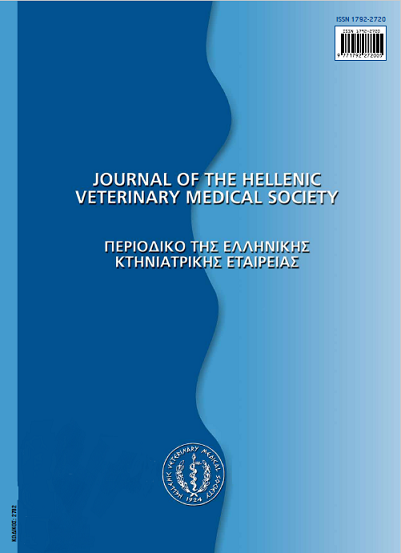Equine Sesamoiditis: Report on one case
Résumé
Sesamoiditis is the inflammation of the proximal sesamoid bones. The aetiopathogenesis of sesamoiditis is still open to discussion, while several therapeutic protocols have been put forward. This study presents the case of a l6year-old Dutch Warmblood gelding with sesamoiditis of the right forelimb. A right forelimb lameness (3/10), with a positive lower limb flexion test (5/10) was noted, and enlargement of the soft tissues of the right fore fedock. Based on the positive low four point nerve block, radiographic examination of the fedock revealed the presence of numerous radiolucent areas along the palmar aspect of the sesamoidean bones, but only minimal new bone formation on its base. An ultrasonographic evaluation of the suspensory ligament and the distal sesamoidean ligaments was made, something which did not detect any abnormalities. Phenylobutazone (4mg/kg i.v. SID) was administered for five days and, also, local hydrotherapy with cold water was used and the horse was given a 15- day box rest. The horse was re-examined three months following the initial inspection. The radiographic examination of the fetlock showed the same lesions with the initial examination. The second ultrasonographic evaluation, though, showed enlargement by 50% of the lateral branch of the suspensory ligament with loss of the normal outline. Moreover, anechoic areas were noted within the branch with calcification at its insertion site. To address the inflammation phenylobutazone (4mg/kg i.v.) was administered for ten days and, also, local hydrotherapy with cold water was used. Box-rest for 30 days was recommended. In the end of this period there was no inflammation in the fetlock region. A blister (TWYDIL liquid blister®) was used in order to resolve the chronic inflammation of the suspensory apparatus. The horse was then given three weeks of box rest and received correcting shoeing (egg- bar shoe with elevated heels and rolled- toe). It was then put in a gradually increasingexercise program.
Article Details
- Comment citer
-
DIAKAKIS (Ν.ΔΙΑΚΑΚΗΣ) N., MARAKI (M. MAPAKH), M., PATSIKAS (Μ. ΠΑΤΣΙΚΑΣ) M., & DESIRIS (Α. ΔΕΣΙΡΗΣ) A. (2017). Equine Sesamoiditis: Report on one case. Journal of the Hellenic Veterinary Medical Society, 56(4), 350–357. https://doi.org/10.12681/jhvms.15095
- Numéro
- Vol. 56 No 4 (2005)
- Rubrique
- Case Report
Authors who publish with this journal agree to the following terms:
· Authors retain copyright and grant the journal right of first publication with the work simultaneously licensed under a Creative Commons Attribution Non-Commercial License that allows others to share the work with an acknowledgement of the work's authorship and initial publication in this journal.
· Authors are able to enter into separate, additional contractual arrangements for the non-exclusive distribution of the journal's published version of the work (e.g. post it to an institutional repository or publish it in a book), with an acknowledgement of its initial publication in this journal.
· Authors are permitted and encouraged to post their work online (preferably in institutional repositories or on their website) prior to and during the submission process, as it can lead to productive exchanges, as well as earlier and greater citation of published work.








